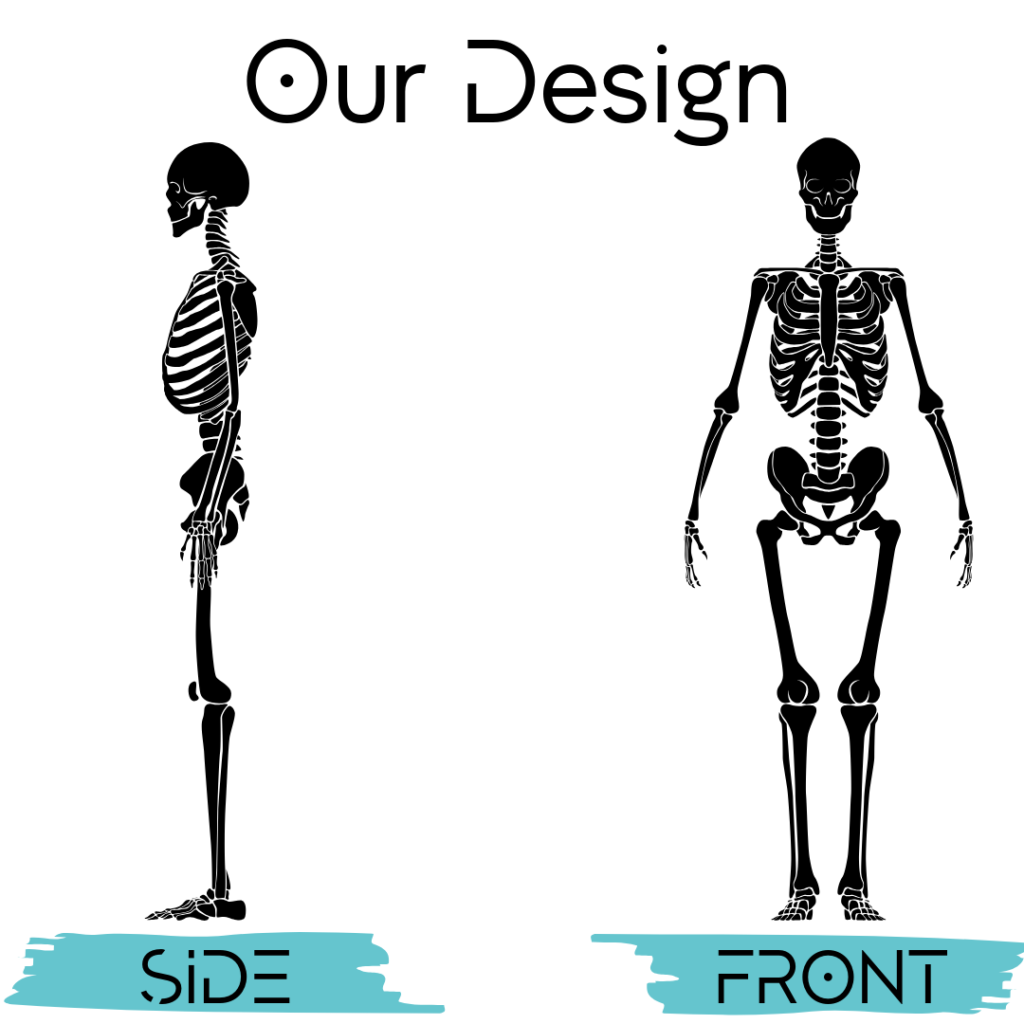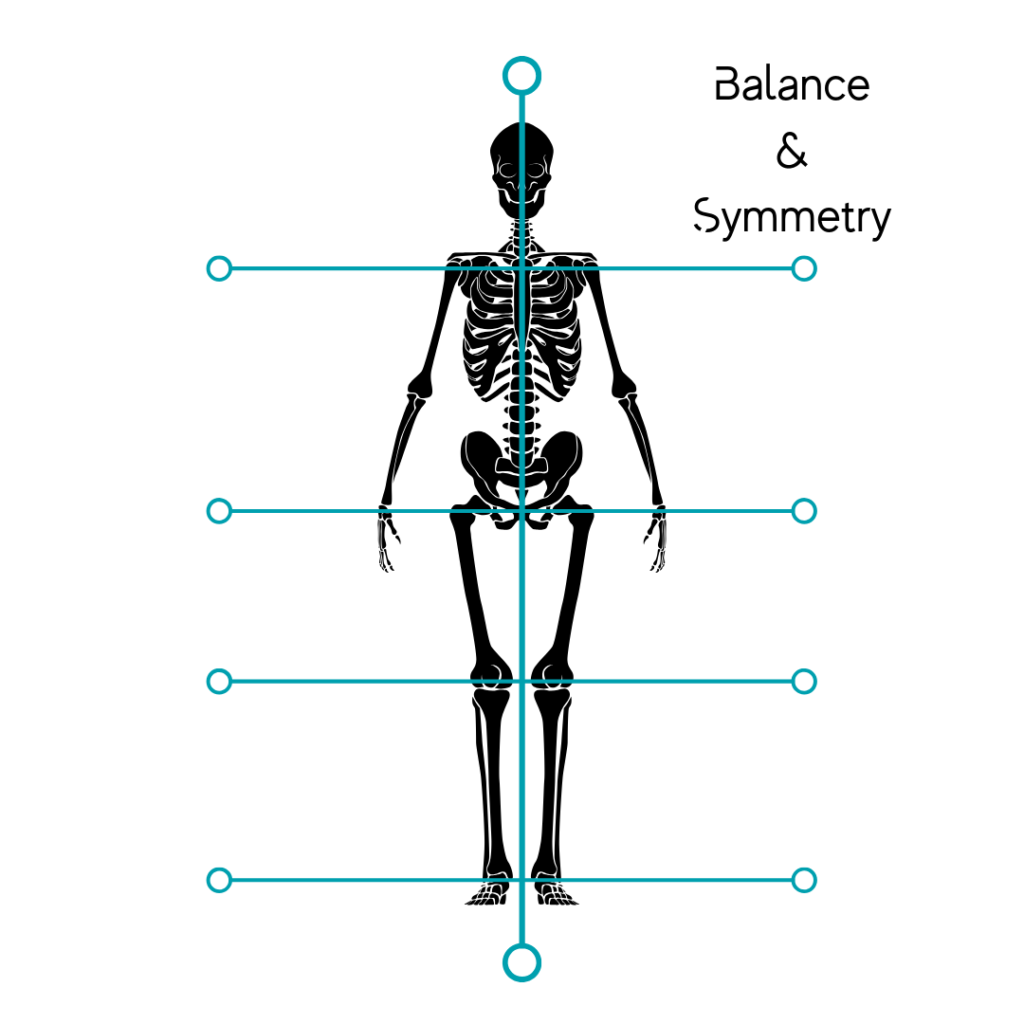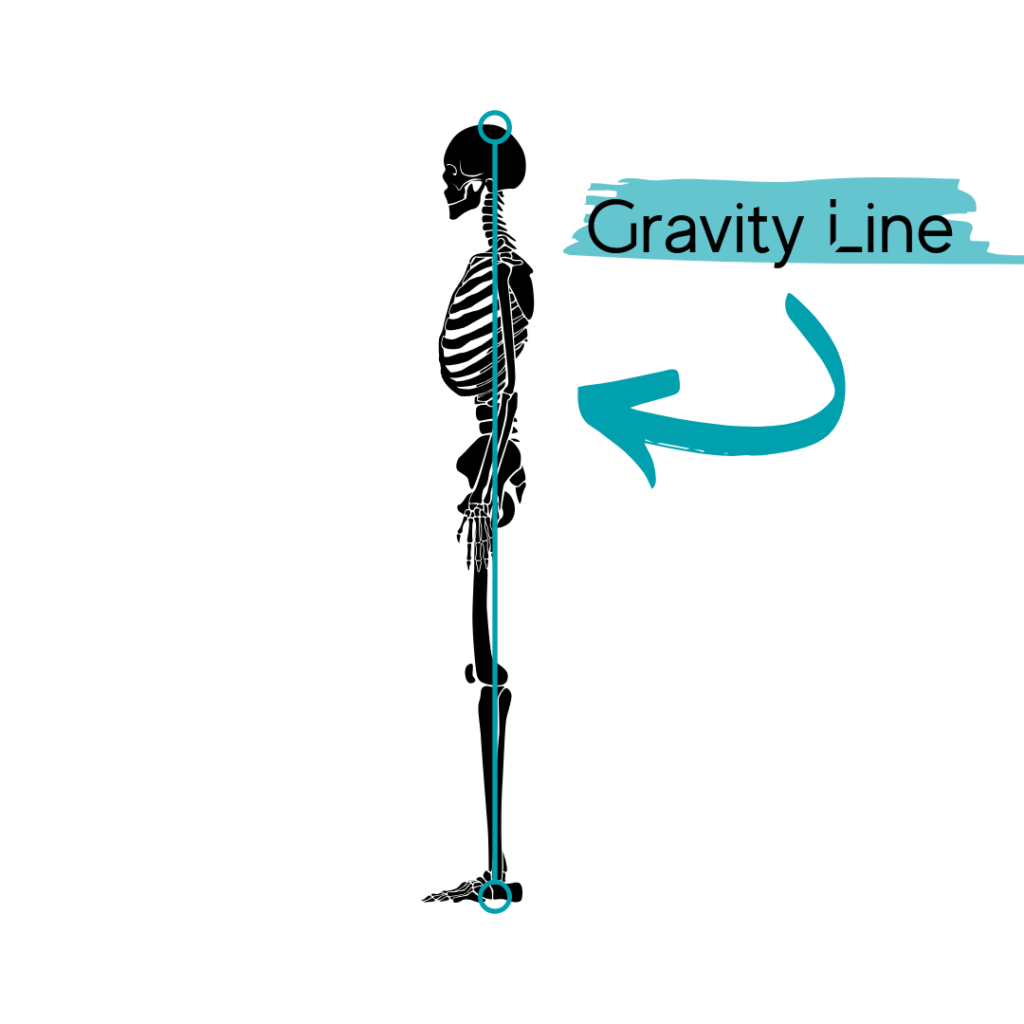
Here we are.
We might all come in different shapes and sizes, but this, is us. We all share this basic design.
And if you look at this universally binding design, you can come to some pretty quick easy judgements about it.
We have two sets of:
Feet, ankles, knees, hips, pelvic bones, shoulders, ribs, elbows, and wrists.
We have one:
Sacrum, spine, skull, jaw.
Everything we have two of, can be found at our sides. (hips, shoulders, etc..)
Everything we have one of, can be found in the middle of our body (sacrum, spine, jaw and head)
If you want to truly be pain free, the first step is to take is to look at this basic design we all have, and then look at how your body is violating this basic design.

Front View
Both shoulders are level and in the same position. Both hips are level and in the same position. Knees are both pointed forward in the same direction, and so are the feet. The spine runs right down the middle, separating the right side and left side.
Here are a few examples of what it might look or feel like like when you violate this basic, level, balanced, symmetrical design.
Example 1.
One shoulder is higher than the other. This might be you if one shoulder is tighter than the other, or if you have symptoms in one shoulder and not the other.
Example 2.
One hip is higher than the other. This might be you if one hip is tighter than the other, or if you have symptoms in one hip and not the other.
Example 3.
One leg is rotated or in a different position than the other leg. This might be you if you have back pain, on one side and not the other, or if you notice issues with one ankle, knee, hip, or shoulder, and not the other.
Remember, we were designed to be balanced, level, and symmetrical. So when you aren’t balanced, you’re going against your design. When that happens, so enter chronic pain and non-pain symptoms like stiffness, tightness, lack of range of motion, or excess tension. Those are just a few simple ways your body tries to tell you something is not doing what it is supposed to do.
One hip or shoulder being higher than the other, is just one really simple example of what violating this design can look like, though there are many creative, unique, and tricky ways that people can violate this design. Chances are high, if you do fall into one of those examples mentioned above, imbalances will show up at nearly every joint if thorough testing is done.
Balance from right to left is just part of the equation of becoming pain free. You could be balanced from left to right perfectly, but if we were to look at you from the side, do your joints stack vertically?
That question brings us to the next topic of discussions regarding design…

Gravity Lines
Your joints should stack vertically on on top of each other. When they don’t, muscles have to work harder to do simple basic tasks, and your joints undergo excessive amounts of stress. Let’s take a look at why and how this is.
Gravity is always upon us. We are constantly reacting to the force that’s pulling us down to the ground. How you resist that force can have a massive influence on how you feel and move.
Ideally, you want to have all your joints stacked vertically. When you are vertically stacked, weight is distributed evenly, the muscles in the front of your body share equal stresses with the muscles in the back of your body – another word for this is dynamic tension – here’s another quick example to understand that principle.
If you hold a 10 pound weight in your hand down by your side all day, I’m sure at some point it will feel heavy and you’ll want to put it down.
Now imagine holding that same 10 pound weight all day, except the weight is held out in front of you with a straight arm.
Is the weight heavier? No, it’s still 10 pounds. But every inch forward that weight moves from your side (vertical gravity line) the weight feels heavier and you stress your muscles significantly more to hold the same weight.
In both examples, the weight was 10 pounds, but where the weight was being held in relation to your center of gravity line, clearly made one of those scenarios harder than the other.
Now, let’s apply this example to your specific posture and our original design.
Imagine your head position, which is just 8 to 10 pounds, is 1 to 2 inches in front of your shoulders (it should be naturally balanced on top of your shoulders)…how hard do the muscles in your neck now have to work all day long to carry that heavy forward weight instead of your head being relaxed and easily held vertically over your shoulders all day long?
The answer is, a lot harder than they should.
So now just with a forward head position, instead of your neck being relaxed, it’s chronically tense ‘fighting’ gravity…how does that affect your shoulder function? How does that shoulder function, which is now affected by your head position, then affect your spine and pelvic position…and the list goes on from joint to joint all the way up and down through your body.
It is important, not because I say it is, or because it’s in my opinion that it’s important. The answers for how we work can be found in our design.
By now, you know enough about our design to see the basic truths it posses. My program, helps people understand these basic truths, how their body is violating these truths, and what to do to correct them, because once you do, your life will change for the better. You’ll feel better, move better, and most importantly, live better.